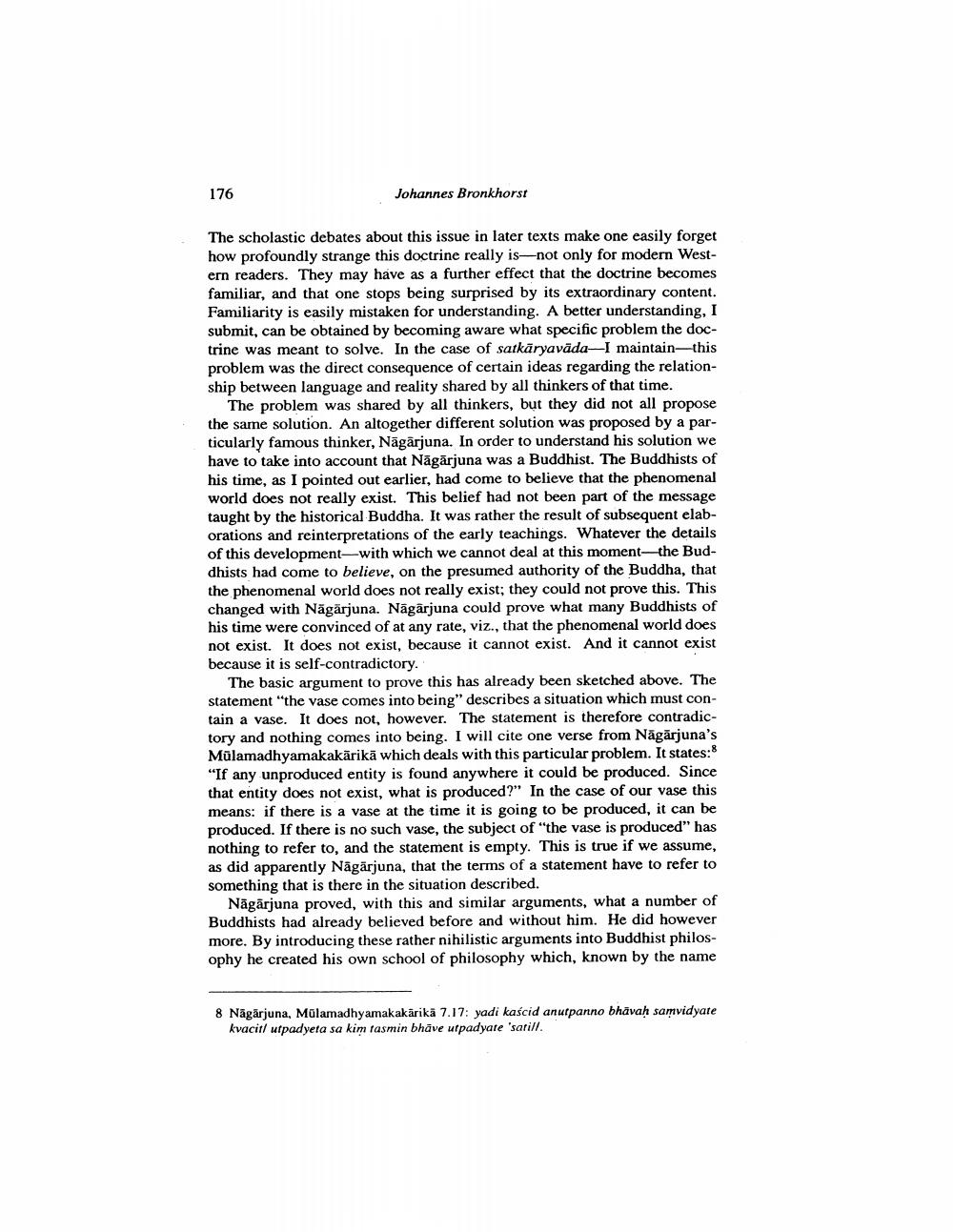________________
176
Johannes Bronkhorst
The scholastic debates about this issue in later texts make one easily forget how profoundly strange this doctrine really is not only for modern Western readers. They may have as a further effect that the doctrine becomes familiar, and that one stops being surprised by its extraordinary content. Familiarity is easily mistaken for understanding. A better understanding, I submit, can be obtained by becoming aware what specific problem the doctrine was meant to solve. In the case of satkāryavāda-I maintain this problem was the direct consequence of certain ideas regarding the relationship between language and reality shared by all thinkers of that time.
The problem was shared by all thinkers, but they did not all propose the same solution. An altogether different solution was proposed by a particularly famous thinker, Nāgārjuna. In order to understand his solution we have to take into account that Nägarjuna was a Buddhist. The Buddhists of his time, as I pointed out earlier, had come to believe that the phenomenal world does not really exist. This belief had not been part of the message taught by the historical Buddha. It was rather the result of subsequent elaborations and reinterpretations of the early teachings. Whatever the details of this development—with which we cannot deal at this moment—the Buddhists had come to believe, on the presumed authority of the Buddha, that the phenomenal world does not really exist; they could not prove this. This changed with Nagarjuna. Nägarjuna could prove what many Buddhists of his time were convinced of at any rate, viz., that the phenomenal world does not exist. It does not exist, because it cannot exist. And it cannot exist because it is self-contradictory.
The basic argument to prove this has already been sketched above. The statement "the vase comes into being" describes a situation which must contain a vase. It does not, however. The statement is therefore contradictory and nothing comes into being. I will cite one verse from Nāgārjuna's Mülamadhyamakakärikä which deals with this particular problem. It states: "If any unproduced entity is found anywhere it could be produced. Since that entity does not exist, what is produced?" In the case of our vase this means: if there is a vase at the time it is going to be produced, it can be produced. If there is no such vase, the subject of "the vase is produced" has nothing to refer to, and the statement is empty. This is true if we assume, as did apparently Nāgārjuna, that the terms of a statement have to refer to something that is there in the situation described.
Nāgārjuna proved, with this and similar arguments, what a number of Buddhists had already believed before and without him. He did however more. By introducing these rather nihilistic arguments into Buddhist philosophy he created his own school of philosophy which, known by the name
8 Nāgārjuna, Mülamadhyamakakärikä 7.17: yadi kaścid anurpanno bhāvah samvidyate
kvacitl utpadyeta sa kim tasmin bhāve utpadyate 'sarill.




